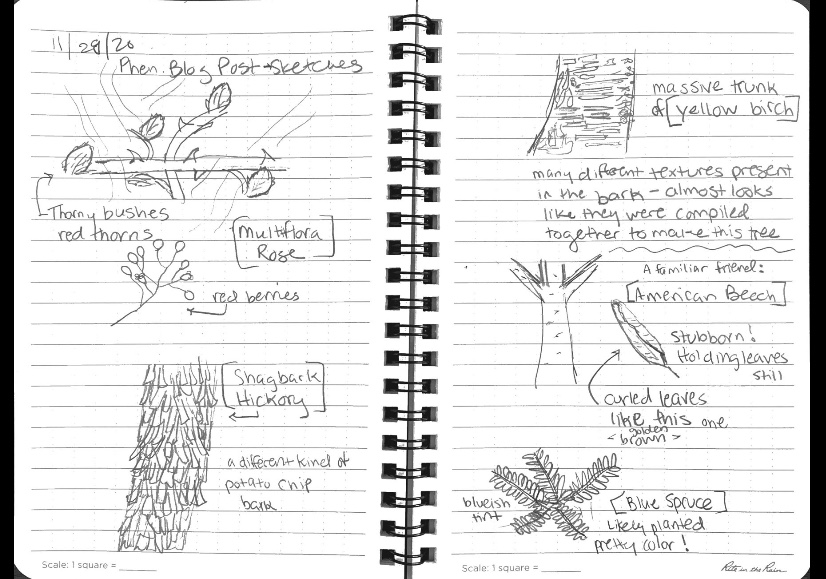Map link:
https://www.google.com/maps/d/viewer?mid=1hFX5NJtG-BWtiX-AiE-kuNWxh5qU4WgY&usp=sharing

For this post, my first thought for a location was one of my town’s local reservoirs. There are walking paths around it and it’s a place I’ve been going to since I was little. However, with the pandemic, parking has been limited to the reservoirs, and they’ve been super busy, so I decided to walk on a trail a mile or so from the reservoir, where it’s quieter.
The first thing I noticed that was similar to my spot in Vermont is that both places have a substantial amount of detritus, in the form of fallen trees and almost mounds of branches from a variety of trees.
This spot has a high coverage of low growing plants, especially small ferns. My spot in East Woods has almost no vegetation that isn’t trees. This would point to a difference in soil and likely nutrient level within it.
This spot has a much wider variety of trees than my spot in VT. East Woods has only a handful of tree and woody plant species by my observations, while this spot has over a dozen. This surprised me because on first glance, I would have guessed there would be less variety here, as the trees are spaced farther out, making them appear sparser in diversity.
I was pleased to see a handful of the same species in this spot as my spot in VT. These common to both spots include Northern Red Oak, Eastern White Pine, American Beech, and Eastern Hemlock. However, they were found in different frequencies. Eastern Hemlock is very common in East Woods, and I only found a couple in this new spot. The same can be said for American Beech and Northern Red Oak. There were also a few species similar to those I spotted in East Woods like Pin Cherry.
Something I thought was cool was that by a small brook I stumbled upon, there were these gnarly thorny bushes, and I used a plant ID app to discover that they were Multiflora Rose bushes. If I was not doing this project, I wouldn’t have taken an extra moment to figure out that these seemingly meaningless piles of thorns were actually put there purposefully to beautify the edges of the brook.
Other species I identified in this spot include:
-Pawpaw
-Barberry
-Blue Spruce
-Shagbark Hickory
-White Ash
-Yellow Birch
-Common Persimmon
-Eastern Cottonwood

